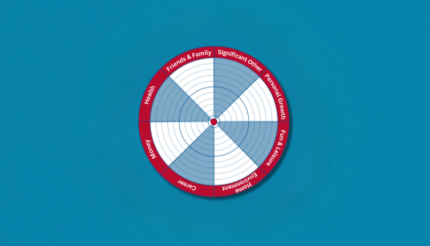When you invest in marketing your business, you need to plan it and work at it. Without good planning, it’s going to be a waste of money. The goal of marketing is to have people come to you, seek out your product or service. Therefore you must understand what has to be done by you and your team (if you have one) to make that happen.
Let’s see what elements you need to master in order to build an effective marketing plan.
1) Market Research
When you conduct market research, you should focus on two categories: your existing customer base (your current clients) and an external customer base (people who may buy from you).
An common concept in business is that close to 80% of your revenue comes from around 20% of your customers. Go through your numbers and identify your best clients — the people or companies who bring in most of your income.
Once you’ve identified who brings the highest income, take a look at who these customers are. Survey this group to learn more about the relationship your best clients have with your company.
The purpose here is to identify similarities between your best clients, to see any patterns that could help to attract similar people with your marketing efforts. You want to look beyond demographics and other visible connections. Find the trends within their way of thinking, their attitudes and interests:
- Where they buy other things
- How they like to use your product/service
- Whether they like to shop online
- Other details that can help you understand buying behaviours
Everything you learn about them will help you define your external customer base. This way, you can start further research online to work out how many potential customers you can target in your market, and how many other companies may already be competing for the attention of this audience.
2) Marketing Goals
After this research, you can set your business goals and marketing goals. It is essential you know how big the marketplace is, to make educated management and marketing decisions. Your efforts will vary depending on the number of people using your product, the number of competitors, and how much these competitors spend on marketing and advertising.
For setting your goals, you need to go back to the 5 Ways Formula:
Leads x Conversion = Customers
Leads are the potential buyers, and the Conversion rate is the percentage of leads who turn into customers.
Customers x Number of Transactions x Average Sale = Total Revenue
Total Revenue x Margins = Profit
As my “Multiply your profit with the 5 ways Formula” will there be a link to that blog by the time this one goes out? blog explains, to use this formula, you first need to know your current numbers and what you want those numbers to be. Use the data to identify your marketing goals by working backwards through the equation.
For example, if you need ten new customers a week to make a profit, you need to find out how many leads you have to get each month to close ten sales each week. What matters is that you set the number based on the needs of your business and your capacity, so as not to get too many people in your funnel at once and consequently fail to deliver.
3) Budget
Investing in marketing is investing in acquiring customers — that’s why it is called customer acquisition cost. Only you can decide how much you want to spend to get people to come to you, based on the numbers you’ve identified using the 5 Ways Formula.
When you set your budget, you also want to clarify how you plan to measure the return on your marketing. You need to know if your strategies are working or not, so you need a handle on how people respond to your marketing messages.
For instance, if you run ads, you will periodically want to evaluate which of them generate the most responses. The trick is to go for the metrics and Key Performance Indicators (KPIs) that matter. It’s not about how many people like or click on your ad, but about the value that these potential customers can bring to you.
When you gain new customers, begin to calculate their ‘lifetime value’::
- How many do times they come back?
- How much do they spend when buying from you?
- How long do they do business with you?
- How many onward referrals to new customers do they bring?
Track how customers interact with your brand to see and understand their real value for your company. This way you can accurately calculate the return on your marketing investment.
4) SWOT Analysis
When you perform a SWOT analysis, you look at your
- Strengths
- Weaknesses
- Opportunities
- Threats
when operating in a specific market.
For an accurate SWOT analysis, part of the process is to look at your competitors and learn everything you can:
- Prices
- Structures
- Products
- Payment methods
- Social media
- Services
- Other offers
… anything that can impact your bottom line.
Brad Sugars, ActionCOACH founder and CEO, says: “If your customers know more about your competitors than your salespeople, you have a problem.” In other words, do your homework and make sure you train your people to lead with your strengths. They should know your competitors’ strengths and weaknesses in order to win more clients, close more deals, increase revenue.
5) Marketing Channels
Once you know your strengths and weaknesses, you must decide where you sell and promote your brand.
Analyse all the channels you can sell through, whether these are online or in a physical manner, all the possible routes open to you to bring your product or service to market. Brainstorm ideas and evaluate them to consider the results you might get for your business using each channel. Decide which to reject and which to pursue.
Then do the same for the marketing channels available or appropriate for you to promote your products or services. List and think about all the different online and offline channels you could use to go to market, whatever they may be: having your own website; being interviewed on a local radio station; joining a business network; sending out direct mail.
Don’t wait for people to look for you. Help them find you by putting your messages where they are already looking. Handling marketing is a full-time job and ultimately you’ll need someone to do it for you. At the outset, however, you need to do the research yourself and understand marketing well enough to know the right person to hire when the time comes.
6) Your Unique Selling Point (USP)
Your USP is the key concept that differentiates you from the competition. Unfortunately, uniqueness is often one of the hardest things for a business owner to see, because you are standing right in the middle of your business.
The USP can be anything:
- An actual difference – e.g. you own the only cliff-top restaurant in town
- Your story – your brand story or personal story
- Customer service – not the most inspired choice, but can work if you set high standards and deliver top results every time: this also requires you to implement the right systems to eradicate any frustrations that could arise with your service – don’t set high standards if you are not sure of meeting them: you don’t want to overpromise and underdeliver
If you don’t know your USP, why not ask your customers what’s different about you and why they have chosen you, then use what they tell you to market your business?
What’s Next?
Start by analysing your target audience:
- Be very specific – not just demographics
- Break down your audience into smaller segments
- Identify your best customers
- List +/-10 traits that make a customer great for you
- With this list, go through your current customer list and segment your clients by their characteristics
The purpose of this analysis is to identify the markets and customers you want to target. Ideally, you want to determine:
- Ten volume markets: business areas where you make money from selling volume
- Ten profit markets: business areas where you make money from selling high-profit products
At this point, you’re ready to develop marketing campaigns for these two distinct target audiences as well as campaigns aimed at all your potential clients (strategies that work across the board).
Build a calendar for campaigns, allocate time for running each campaign. Remember that you need to know:
- Your target audience.
- What you are offering.
- How you plan to communicate the offer.
Before each campaign, make sure you know the answers to these five questions:
- Who is my ideal customer?
- Where do I find them (in the highest concentration)?
- What do they really want to buy? What does the product or service do for them? / What is the result? People don’t just buy a drill: they buy a means to putting a hole in a wall.
- Why do they want to buy it? Different target audiences have different whys. This is your value proposition – why would a customer choose to buy your product or service?
- How do you communicate your value proposition?
At every step of this journey, you must be clear. You want to build a campaign to make money, not just for the sake of looking good out there. Invest after you have created the plan: you want marketing that is actually going to make you money.
If you’d like to learn how to accept ownership and take responsibility, to own what has happened in your life and work to change what you don’t like, sign up for a free coaching session where I’ll explain how to help transform your mindset and take control.





